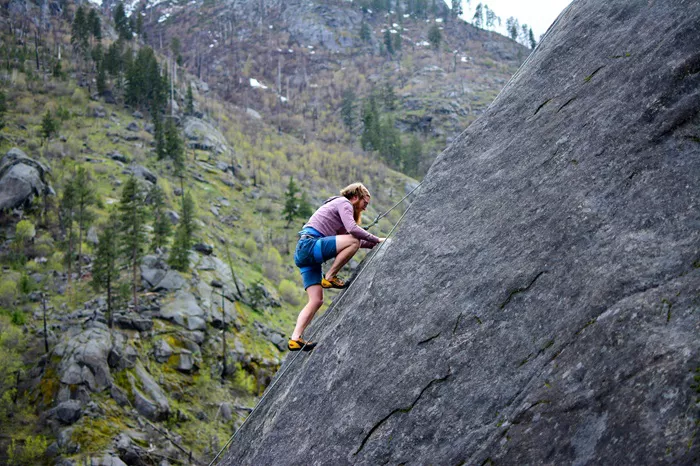Free soloing stands as the purest form of climbing, where climbers ascend steep rock faces without any protective gear. Unlike traditional climbing, which relies on ropes and harnesses for safety, free soloing requires exceptional skill, intense focus, and a profound connection between mind and body.
Historical Background
Free soloing traces its roots to the early days of climbing, when adventurers sought to conquer peaks and cliffs with minimal equipment. Throughout history, legendary climbers like John Gill and John Bachar challenged themselves on daring ascents without the safety nets of modern climbing gear.
Evolution and Modernization
Over the decades, free soloing has evolved from a niche pursuit to a recognized discipline within the climbing community. Innovations in climbing techniques, advances in physical training, and the rise of social media have propelled free soloing into the mainstream, inspiring both awe and controversy.
Understanding the Risks
Assessing the Danger
The risks of free soloing are stark and undeniable. Without ropes or protective gear, a fall from even a modest height can be catastrophic, often resulting in severe injury or death. Climbers must confront these dangers with a clear understanding of their capabilities and limitations.
Psychological Challenges
Beyond physical danger, free soloing exacts a heavy toll on the mind. Climbers face intense pressure to perform flawlessly, managing fear, doubt, and adrenaline while clinging to sheer rock faces hundreds or thousands of feet above the ground.
Case Studies and Insights
Examining case studies of notable accidents and near-misses in free soloing sheds light on the consequences of misjudgment or overconfidence. Insights from experienced climbers underscore the mental fortitude and decision-making skills required for safe and successful ascents.
Notable Free Solo Climbs
Historic Ascents
Highlighting landmark achievements in free solo climbing history, such as Wolfgang Güllich’s pioneering ascents in Germany’s Frankenjura or John Bachar’s iconic routes in Yosemite Valley. These climbs set benchmarks for future generations of free soloists.
Contemporary Pioneers
Profiles of modern-day legends like Alex Honnold, whose unprecedented free solo of El Capitan’s Freerider route in Yosemite National Park captivated the world. Insights into their preparation, training regimens, and the philosophical motivations that drive them to pursue such audacious feats.
Training for Free Soloing
Physical Conditioning
Achieving peak physical fitness is essential for free solo climbers. Training focuses on building strength, flexibility, and endurance tailored to the demands of unroped ascents. Exercises target core stability, finger strength, and dynamic movement skills crucial for navigating challenging terrain.
Technical Skills
Mastering technical skills is paramount in free soloing, where split-second decisions can mean the difference between success and disaster. Climbers hone their ability to read rock formations, execute precise movements, and maintain balance under extreme conditions.
Mental Preparation
The mental aspect of free soloing is perhaps its most daunting challenge. Techniques such as visualization, meditation, and controlled breathing help climbers manage fear and enhance focus during climbs. Mental resilience and self-awareness are cultivated through years of practice and experience.
Ethical Considerations
Environmental Impact
Exploring the environmental footprint of free soloing and its potential impact on fragile ecosystems. Advocacy for responsible climbing practices, including Leave No Trace principles and stewardship of climbing areas to preserve natural landscapes for future generations.
Community and Respect
Examining the dynamics of the climbing community and the ethical considerations surrounding free soloing. Respect for climbing ethics, mutual support among climbers, and fostering a culture of safety and camaraderie within the sport.
Safety Measures and Alternatives
Risk Mitigation Strategies
While free soloing inherently carries substantial risk, climbers employ strategies to mitigate danger and enhance safety. These may include thorough route reconnaissance, incremental progression on familiar terrain, and maintaining physical and mental readiness.
Alternatives to Free Soloing
Recognizing that free soloing is not the only path to adventure in climbing. Comparing and contrasting safer alternatives such as traditional roped climbing, bouldering, and sport climbing, which offer varying levels of challenge and protection.
see also: How To Prepare Your Body For Rock Climbing
Conclusion
In conclusion, free soloing represents the ultimate test of skill, courage, and self-reliance in the world of climbing. Its allure lies in the purity of movement, the thrill of overcoming fear, and the profound connection with nature and oneself. As free soloing continues to captivate and challenge climbers worldwide, its evolution and ethical considerations will shape its future within the broader climbing community.
related topics:
- Essential Gear And Tips To Start Your Rock Climbing Journey
- Forearm Pain After Rock Climbing: Causes, Prevention, And Recovery
- Exploring The Most Common Types Of Rock Climbing

